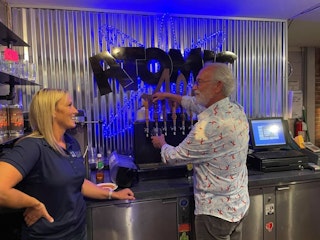The Bridge That Once Defined a Region - And Divided It Too
Puente Verde
Built in 1922, the Pasco–Kennewick Bridge, known locally as the Green Bridge, was the Tri‑Cities’ first vehicular crossing. It shifted the region from isolated ferry towns to a connected community, serving as the only route between Pasco and Kennewick for more than five decades.
A Vital Passage Born of Growth, Lost to Time and Expansion
The Green Bridge was a steel cantilever truss structure spanning over 3,300 feet across the Columbia River, the first automobile bridge in South Eastern Washington, and initially celebrated as a marker of progress between communities
During World War II and beyond, it carried up to 18,000 vehicles a day, many of them Hanford Site workers commuting to and from Pasco. Yet over time, it also took on a darker legacy: it marked the invisible boundary between sundown-town Kennewick, which enforced exclusion of Black residents after dark, and Pasco, where they were confined in segregated housing areas.
Replaced by the Cable Bridge in 1978 and demolished in 1990 after community debates over preservation, the bridge is gone, but not forgotten. Today, a historical marker in Kennewick honors the Green Bridge, and a preserved section of its railing is on display in front of the Museum at Keewaydin as tangible remembrance of its complex role in regional history.

































